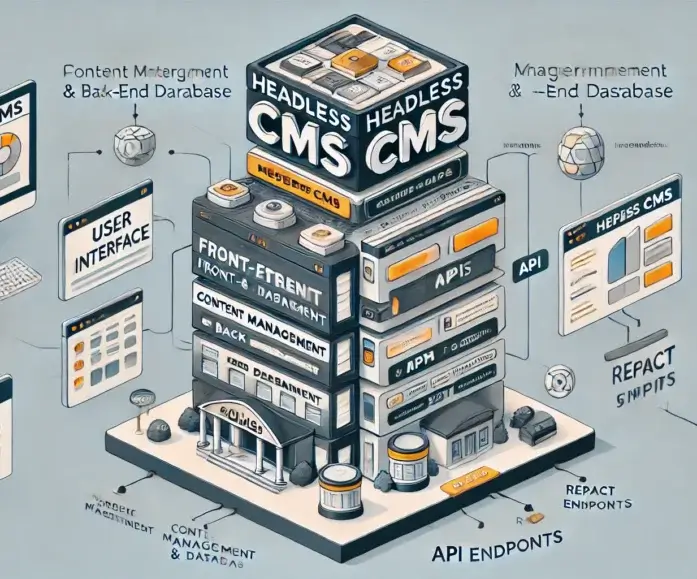
WordPress for Global Brands: Managing Complex Content Releases
The Challenge: Managing Complex Content Releases
Large brands often face the unique challenge of coordinating content releases that span multiple markets, languages, and regulatory environments. Product launches, rebranding efforts, major announcements, and global marketing campaigns require meticulous planning and execution to maintain brand consistency and maximise impact.
For many organisations, highly publicised content releases represent make-or-break moments that (if not managed effectively) can result in potential brand damage and negative public perception. In these scenarios, it’s vital for all planned content to be released on time, to the right audience segments with 100% accuracy.
This article will unpack the major challenges of global content releases and show you how we’ve cut through the complexity for brands who were stuck in exactly the same spot you’re in now.
How WordPress Can Cut Through the Complexity
With the right configuration, WordPress can handle these enterprise challenges remarkably well – often better than proprietary, expensive CMSs or DXPs that promise the world.
Common Challenges in Global Content Releases
What typically makes these content releases complex? We see these challenges crop up time and again:
- Publishing large volumes of scheduled content simultaneously across multiple languages/timezones
- Staggered release schedules, publishing content sequentially over time
- Pre-release and content under embargo, preventing leakage of sensitive material to the public
- Management of media, including images and video, for unreleased content across multiple environments
- Editorial workflow challenges, approval/submission process, collaboration and preparation
- User access control for large organisations where sensitive data is compartmentalised
- Manual processes, often having to be performed outside of work hours
- Not having the ability to quickly audit content releases to ensure all content is prepared or has released as planned
Scheduling, Timezones, and Staggered Releases
For brands operating globally, coordinating content releases across multiple time zones presents significant logistical hurdles, requiring precise timing for announcements to go live at specific times in different regions, such as 9 am AEST in Australia, followed by corresponding times in Europe and North America. Additionally, staggered rollouts with content published minutes apart, each with dependencies like media and links, add complexity. While WordPress’s core scheduling provides a basic foundation, plugins like PublishPress Planner and PublishPress Future enhance these capabilities for enterprise needs, offering visual editorial calendars with drag-and-drop planning and advanced conditional workflows with email notifications and post-status transitions.
Embargo and Privacy Considerations
Early content leaks can severely compromise launch strategies and damage a business’s reputation. With the large number of people having CMS access, standard permission systems simply don’t provide adequate protection. Pre-release content often contains sensitive information that must remain confidential until a specific date and time. This includes product images, specifications, pricing information, or major corporate announcements.
The stakes are particularly high for product launches, where leaked visuals can completely undermine marketing campaigns and diminish the impact of official reveals. Additionally, in large organisations where hundreds of administrators, editors, and translators across the globe have some form of access to the CMS, restricting content to internal team members becomes crucial to prevent accidental leaks to the public.
Implementing solutions like PublishPress Capabilities and PublishPress Permissions allows you to lock down content properly. Need the CEO to preview that sensitive announcement? No problem – utilise time-limited preview links, password protection, or IP restrictions to maintain control. This prevents accidental leaks and avoids those panicked calls from the marketing team when confidential information surfaces prematurely.
Handling of Pre-Published Media
High-quality images, videos, and other media assets are central to most major content releases, but they present unique challenges. These assets often need to be uploaded and integrated with content well before publication, yet must remain inaccessible to the public. Additionally, embedded video content may not yet be publicly accessible adding complexity to the review/sign-off process depending on the provider.
WP Offload Media provides a handful of unique options when storing/delivering media in WordPress, including storing/transitioning media between public and private buckets and serving private media securely via signed URLs. With some customisation, media can be automatically transitioned from private to public buckets when the status of the post they’re associated with changes as part of the publishing schedule drastically reducing the risk of images leaking to the public.
Revision and Editorial Workflow
To streamline enterprise content workflows in WordPress, plugins like PublishPress Revisions provide essential revise, submit, and approve functionalities, allowing teams to work on upcoming releases without impacting live content and maintaining a complete revision history for accountability. Additionally, MultiCollab offers real-time collaborative editing, similar to Google Docs, enabling multiple team members to leave comments, suggest changes, and collaborate directly within the content editor, including features like comment threads, assignable action items, and content approval workflows. This combination of tools creates a sophisticated review and approval system tailored to enterprise needs, ensuring all stakeholders can contribute effectively while maintaining an orderly publication process.
Multilingual Releases
For truly global brands, content must be localised across multiple languages while maintaining brand consistency. This requires not just translation capabilities, but also the ability to adapt content for cultural contexts while ensuring the core messaging remains intact. In scenarios where a “global” version of a piece of content is the source of truth, translations may or may not exist which can require complex fallback behaviour to ensure all audiences are served the right content at the right time.
We recommend WPML for managing multilingual content in enterprise WordPress implementations. Unlike cloud-based translation plugins, WPML keeps all content and translation data on your own servers, providing complete data ownership and security—a critical consideration for sensitive pre-release content.
WPML’s extensibility allows for deep integration with both WordPress’s core workflows and the workflows of other 3rd party plugins, allowing for a truly tailored solution. Advanced features such as translation memory and glossaries ensure consistency across all content, while compatibility with the Block Editor ensures a smooth editorial experience.
WordPress vs. All in One DXPs: The Open Source Advantage
The key differentiator is that WordPress can be shaped to fit an organisation’s existing workflows, rather than forcing the organisation to adapt to a rigid DXP framework. This flexibility pays dividends when addressing the unique challenges that inevitably arise during complex content release scenarios and enterprise agencies such as ours are expertly positioned to tailor a solution to any business requirement.
For enterprises, this means:
- Solutions can evolve alongside changing business requirements without expensive platform upgrades
- WordPress can be tailored to the priorities of the business, but DXPs may be spread too thin across unused/underutilized features
- Integration between open source and existing enterprise systems is often more straightforward
- Talent for ongoing support and development is readily available and more cost-effective
- Organisations maintain complete ownership of their data and platform
Real-World Success: Fujifilm and iSelect
Rolling content releases for Fujifilm’s global product release programme
Fujifilm’s technical team was trapped in a cycle of late nights, manually managing global content releases across multiple markets and languages. Their CMS couldn’t handle embargoes, leading to operational chaos. We revolutionised their process with a bespoke WordPress solution that provided:
- A single content hub with localised variations.
- Simplified approval workflows, cutting out email overload.
- Robust image protection to prevent premature leaks.
- Automated, time-zone precise publishing.
The result? Flawless global launches of products like the recently released FUJIFILM GFX100RF camera, along with over 50 pieces of content including support resources, news articles and stories in English and Japanese—executed seamlessly in a 30-minute window, showcasing the power of streamlined automation.
Deploying regulated content changes for a publicly traded insurance comparison company
iSelect is one of Australia’s largest insurance comparison engines. As part of their migration to WordPress, we needed to craft a solution that would allow content that relates to various cycles with insurance updates, such as the annual changes to health insurance.
This content had to transition through a range of departmental stakeholders and have sign-off across the board, including from internal compliance officers.
As the information was heavily regulated and embargoed, our team was able to extend the core functionality of WordPress to create batched content releases that would allow internal teams to run scheduled and manual releases of content from staging, UAT and production environments.
This included complex updates like internal linking and secured media assets like PDFs that were prohibited from even existing on production systems until certain dates and times.
Conclusion
Facing issues with an upcoming website relaunch, product announcement, or complex content project? We’ve solved these exact challenges for clients across the globe. At The Code Company, we turn complicated content releases into organised, stress-free deployments.
Reach out if you’d like to discuss how we can streamline your next major launch. No fluff or fancy promises —just practical solutions based on what actually works.

